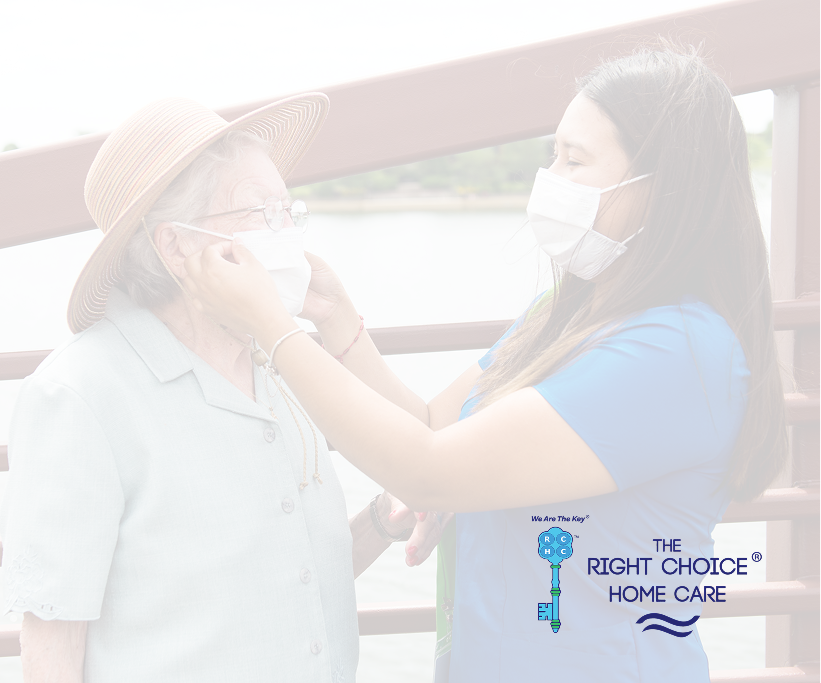Home Care After Mastectomy
Right Choice Home Care provides home care agency for women recovering from mastectomy. Call
Right Choice Home Care at (866) 799-5955 if you need help recovering from surgery.
 Surgery is one of the most popular treatments for breast cancer. The recovery process after a mastectomy (partial or bilateral), a lumpectomy, or even reconstruction can provide its own set of issues.
Surgery is one of the most popular treatments for breast cancer. The recovery process after a mastectomy (partial or bilateral), a lumpectomy, or even reconstruction can provide its own set of issues.
Patients will be transferred to a recovery room after surgery, where their vitals will be monitored by a medical team. Everyone’s experience is unique, although the average hospital stay is between one and three days. Patients can anticipate to stay longer if they have a mastectomy and reconstruction at the same time.
16 Must-Haves for Mastectomy Recovery from Survivors and Patients
We are fortunate to be able to seek advice from our community of breast cancer survivors. To assist breast cancer patients who are contemplating surgery, we’ve developed a list of some of the most commonly used things to provide comfort throughout their hospital stay or recovery at home or do home care after mastectomy.
There was a flood of responses, with front button shirts, yoga trousers, and an underarm pillow among the most popular options. Some of the unconventional, but brilliant, suggestions included a back scratcher, a drain apron, and a recliner.
Patients were also advised to use dry shampoo and feminine hygiene towels or wipes to stay fresh. Because most patients are advised not to shower until the surgical drains have been removed, these products can assist in staying clean until it is safe to resume normal activities.
While trying to recuperate, it’s critical for the patient to offer themselves grace and allow time for healing—let go of the never-ending chore list, the onerous process of food shopping, and the stress of cooking. Before a mastectomy, it’s a good idea to start a meal train with friends and family.
Ashley, a survivor in our group, described how she organized her home to prepare for her recovery period:
“I prepared my house and put everything in reach and out of cabinets before the surgery so that I could do as much for myself as possible.” You won’t be able to elevate your arms over your head while your drains are in place (6-9 weeks). Knowing this, I prepared by removing items such as coffee cups, plates, shampoo, and other similar items off upper shelves.
“Three days before, I went through everything I used on a daily basis and made a mental note of what I needed to reach for. I was fortunate to have my husband at home, but I’m also stubborn and like to do things on my own whenever possible.
“Be prepared to not be able to sleep in your bed for a while, as getting out of it once you’re laying down is nearly difficult.” I slept in a chair for almost a week before investing in a wedge pillow for my bed, which was fantastic! I used it for roughly five weeks until I was able to get out of bed using my abdominal muscles.”
Survivors’ Recommendations for home care after surgery.
How to prepare for surgery at home:
Place the most frequently used goods within easy reach.
For sleeping, find a comfortable chair or recliner.
For a smooth transition to bed, grab a wedge pillow.
Begin a food train, or ask a friend to host one for you while you’re recovering.
Bring the following items to the hospital:
Shirts with a front button and a relaxed fit
Pants for yoga
Seatbelt or a pillow for support under the arm
Slip-on footwear
Snacks
Charger for phone
What to have at home after surgery in Chicago
A “drain apron,” a cardigan or zip-up hoodie with pockets, or a button-up shirt with drain pockets are all good options.
Pen and paper for writing, keeping track of medication times, and asking the doctor questions
If you’re getting a dinner train, it’ll be cooler on the porch.
For sleeping, use a chair or a recliner.
Shampoo that is not wet.
Wipes for cleaning or showering
Pajamas that are both comfortable and stylish

